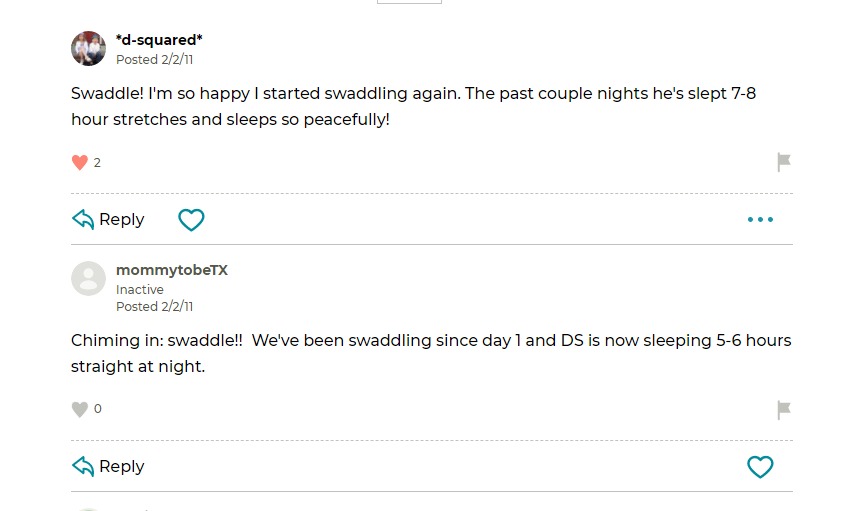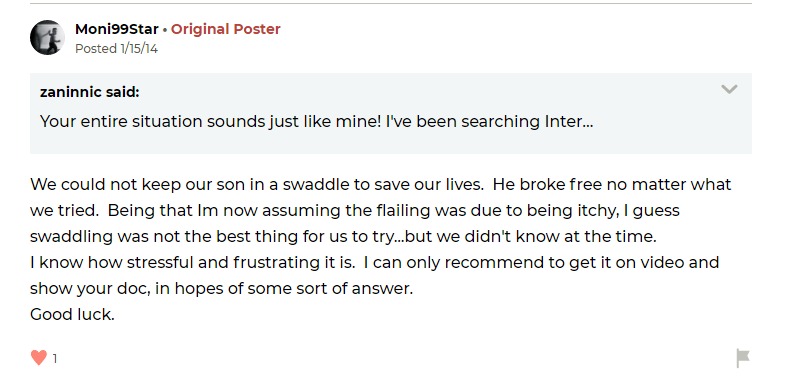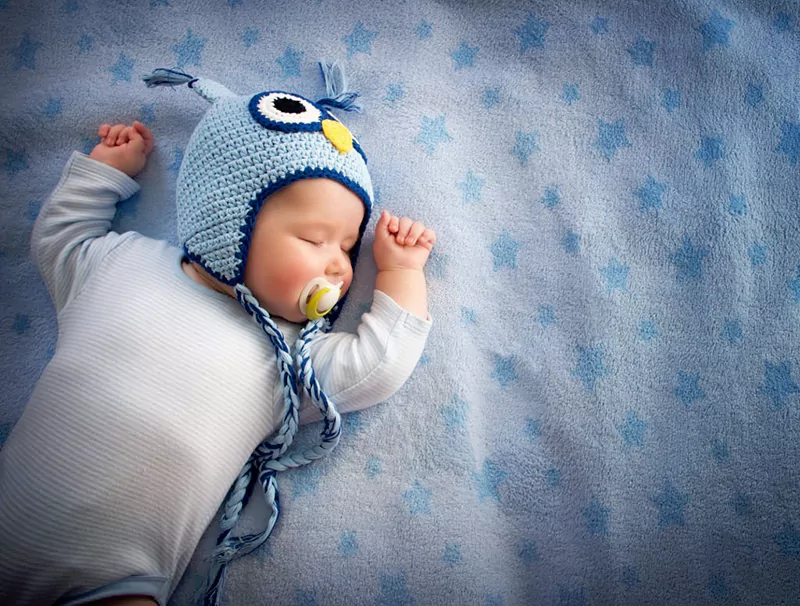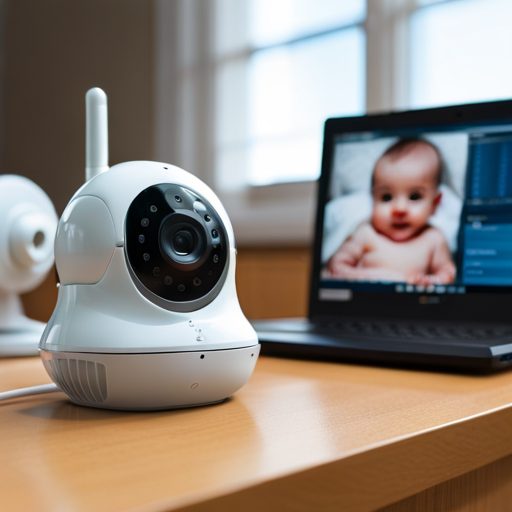Babies are adorable, innocent creatures that bring joy to their parents’ life. It is a natural instinct for parents to want to protect their little ones at all costs.
So, when you notice your baby flailing arms and legs while sleeping, it can be concerning. You may wonder, What’s the point? Are they having a good dream, or are they just messing around? Is this normal behavior or a sign of something more serious?
Well, at the beginning of the discussion we would like to assure you not to worry – it’s totally normal!
Despite appearances, this isn’t a cause for alarm –mostly, it’s just another one of those fascinating things babies do.
In this blog post, we’ll explore the reasons why baby flailing arms and legs while sleeping and what you can do to make sure they get a good night’s sleep. So if you’re curious about this odd behavior, keep reading!
Why baby flailing arms and legs while sleeping and what you can do about it.
You know the drill, baby’s fast asleep, and all of a sudden they’re wildly thrusting their arms and legs in the air like they’re trying to swim away. It’s normal for infants to occasionally move around in their sleep, but what are they trying to tell us when it seems to happen all the time? What can we do about it? Let’s find out.
Moro Reflex:
If you have ever observed your baby during sleep, then it is likely that at some point, he or she will begin flailing their arms and legs. This occurs because of a reflex called the Moro Reflex, which kicks into gear when they startle themselves in slumber. It’s also called “the startle reflex,” something babies do while sleeping!
What You Can Do About It:
A swaddle can be very effective to soothe your baby when your baby flailing arms and legs while sleeping. So many mothers have used this technique successfully in such situations.
The screenshot is taken from community.babycenter.com
Caution 1:
Swaddling your baby too tightly can lead to a problem called hip dysplasia. So you need to be careful about the right technique to swaddle your baby.
Here is a video below on How to Hip-Healthy Swaddle your Baby
How to Hip-Healthy Swaddle your Baby – IHDI – YouTube
Caution 2:
Also, consider swaddling your baby with their arms out. That’s because an overactive child may turn themselves over, which can cause suffocation if they cannot put themselves back down again!
The screenshot is taken from community.whattoexpect.com
Itchiness:
Another possible reason for the baby flailing arms and legs while sleeping is that the child has eczema. It’s super itchy, which makes them restless in bed. We’ve read reports from several mothers who found out their babies had this condition, which made them flail their arms and legs while sleeping!
The screenshot is taken from community.babycenter.com
Read more: HOW TO DEAL WITH PERMANENT NUMBNESS AFTER C SECTION
Some Other Reasons:
Some parents reported that they found skipping naps in the day could make their baby flailing arms and legs while sleeping at night. Being overtired, burping or gas are some other possibilities.
The screenshot is taken from community.babycenter.com
What Does babysleep.com Say:
According to Dr. Kimberly Kirkpatrick Justice from babysleep.com, a baby moving while sleeping is very normal. But sometimes, excessive movement in the arms and legs might be an indicator of a medical disrupter to sleep. If you find your little one having some breathing problem while sleeping, then it is possible that excessive movement might be linked with a breathing problem. In such a situation, she advises consulting with a pediatrician or sleep medicine physician.
Here is a discussion from Dr. Kimberly Kirkpatrick Justice about the movement of children while sleeping.
When do babies stop flailing arms and legs while sleeping:
If the flailing is caused by More reflex, most babies will stop flailing their arms and legs during sleep by 4 to 6 months old. However, if flailing during sleep is caused by other factors such as eczema, skipping naps, gas, or being overtired, these conditions need to be treated before the flailing during sleep stops.
What is Moro Reflex:
There are a number of reflexes that healthy babies are born with, called primitive reflexes. Moro reflex is one of them. It is also something that doctors check for during the postdelivery checkup and in the initial few health visits of the newborn.
Ernst Moro first expressed the Moro reflex in 1918. It refers to an involuntary motor response where babies throw out their arms and legs and open their fingers. The babies may also arch their backs or extend their necks. Then, they will quickly curl everything in place again. You may find a startled look on their face, and they might cry in the process.
While the Moro reflex is technically a startle response, it is also thought to be an important part of a baby’s development.
When Moro reflex disappears:
Moro reflex usually starts around in the initial few weeks and usually goes away by 2-6 months old. When a baby’s brain matures, they no longer need these reflexes as their control over movements increases.
What causes Moro reflex:
The reflex is elicited when an infant experiences a sudden loss of support or feels like he or she is falling. The reflex can also be elicited by a loud noise or other sudden stimuli.
Read more: HOW TO FIX ASYMMETRICAL CRAWLING
What to Do When Your Baby Has the Moro Reflex:
Lower them horizontally:
When your baby has more of a Moro Reflex, you may want to lower them horizontally into their crib so that they don’t tilt back too much. Put their feet first in the crib, then bum, and then head.
Avoid loud sounds and sudden movement:
As we have discussed earlier, loud sounds and sudden movement may trigger Moro reflex. So, it’s better to avoid them.
Hold your baby close:
If you notice your baby’s Moro Reflex, hold them close to your body when you put them down, so they don’t feel like they are falling and only release when they are touching the mattress.
Swaddling:
Swaddling is a technique that can help to soothe infants and prevent them from triggering the Moro reflex.
To swaddle your infant, follow these steps:
1. Lay a large square piece of cloth out flat. You may use a blanket instead. Keep the fabric or blanket in a diamond shape.
2. Fold one corner of the cloth towards the center.
3. Place your infant on their back in the center of the cloth, with their head resting on the folded edge.
4. Wrap the two ends of the cloth around your baby’s body, crossing them over in the front.
5. Tie the ends of the cloth in a knot or bow at the back.
It is important to make sure that the cloth is not too tight and that your baby’s hips can move freely. Also, remember you should remove the swaddle as soon as your little one starts to show signs of rolling. The National Institutes of Health (NIH) advise that you should not swaddle your baby if they are likely to roll onto their stomach. This may increase the risk for SIDS, which has been linked with this position. If you have any concerns, talk to your healthcare provider.
When to see the doctor:
If your baby does not exhibit the Moro reflex at all, it may be a sign of a medical problem. Possible causes of this include general muscular weakness, birth injury, and brain or spinal cord damage.
When the Moro reflex is missing on one side of your baby’s body, it may be due to a nerve injury, a fracture to the collarbone, or a broken shoulder.
If your baby’s Moro reflex doesn’t disappear after six months, this could be a sign that they are experiencing developmental delays in their motor skills.
You should consult with the doctor on the above situation. The doctor may perform a physical examination and may order some tests to rule out any underlying medical condition.
So, what’s the verdict? Baby flailing arms and legs while sleeping is normal. However, there are some things you can do to help minimize it. First and foremost, make sure your baby gets enough sleep by creating a bedtime routine and sticking to it as closely as possible. If your baby seems particularly fidgety at night, try swaddling them in a light blanket–this has been shown to soothe infants and help them stay asleep longer. Finally, keep an eye on your little one’s breathing and if you notice any changes or abnormalities, consult with your pediatrician immediately. We hope this article was helpful! How did you like our effort? Let us know in the comments below!
ATTENTION:
The information on this website is not intended to replace professional medical advice and should never be taken as such. Instead, it should only serve as a starting point for discussing the well-being of your little one. We highly recommend you discuss any concerns or questions regarding you and your family’s health or medical conditions with a doctor or a licensed healthcare provider.













